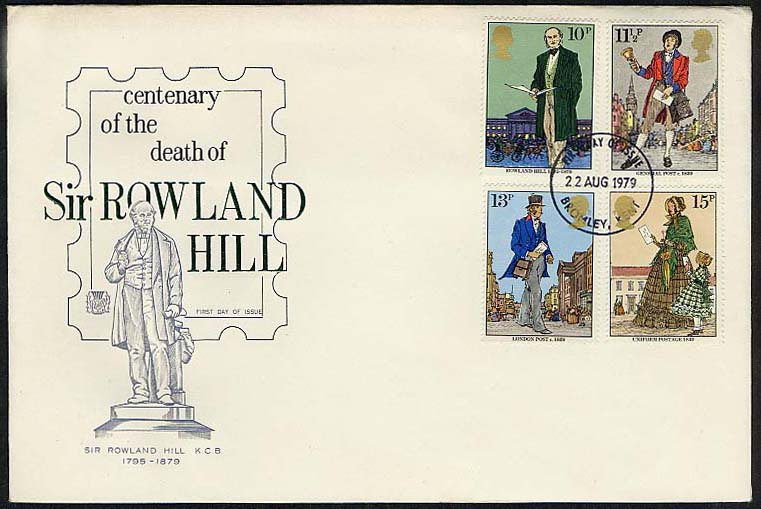The maid, who did not receive the envelope in her name, gave life to the idea of 'stamp'
Sir Rowland Hill, who first came up with the idea of postage stamps, is often mentioned with stamps and first-day envelopes printed in different countries.

Surely there will be those who remember, in the years when there was no internet, stamp collectors had friends from far countries. In fact, what they sent to each other was love, curiosity, desire to learn, and cultural exchange between continents, traveling with the stamps on the envelopes.
There is always a story told about the first appearance of the stamp. It is not clear whether this story is true or not, but it is very important in terms of showing the workings of that day and being a step on the way to the invention of the stamp.
Sir Rowland Hill, KCB, FRS (3 December 1795 – 27 August 1879) was an English teacher, inventor and social reformer. He campaigned for a comprehensive reform of the postal system, based on the concept of Uniform Penny Post and his solution of pre-payment, facilitating the safe, speedy and cheap transfer of letters. Hill later served as a government postal official, and he is usually credited with originating the basic concepts of the modern postal service, including the invention of the postage stamp.
Let me tell you briefly, Rowland Hill, who came up with the idea of the stamp and enabled the printing and use of stamps for the first time, was staying in an inn in England one day. A postman came to the inn and brought a letter to the inn's maid. The maid turned the letter over, turned it, and looked left and right. He returned the envelope to the postman, saying that he had no money in his pocket to pay. Rowland Hill, watching that moment, approached them with kindness and wanted to pay for the incoming mail and give the letter to the maid. But the lady did not accept, even strongly opposed.
The postman took the envelope and left, some time passed; A curiosity that has taken Rowland Hill. What if a person doesn't want to receive a letter from his fiancee who is far away? He called the girl and began to search her mouth with the questions he asked. And he realized that in the dialogue between the two of them, there was no need to take the envelope as they had agreed before. Because the envelope that came was empty, but it was told that the fiancee in the distance was alive and well. Indistinct little marks placed on the envelope also gave information about its condition.
Sir Rowland Hill, who had been given the authority to reform the postal services, decided at that moment that postage would be right to be paid when it was sent. It is not known if the story is true or if such a thing happened, but there is one thing that is known providing pay-for-pay mail service also causes a serious deficit in the state budget.
Known as the creator of the postage stamp, Sir Rowland Hill introduced the idea of stamps in his book "The Importance and Applicability of Postal Reform", written in 1837, emphasizing the payment of postage by the sender instead of the consignee, and presented it to Queen Victoria, the mighty name of the period. In his book, he suggested that a certain standard should be set for the shipments and that the pricing, which had been arbitrary until then, should be made according to a certain tariff. He recommended that all shipments weighing up to 15 Gr be fixed at 1 Penny wherever they go within the UK.
The first stamp known as "Penny Black" was issued on May 6, 1840.
Without further ado, preparations have been made. The first stamp with the image of Queen Victoria, which attracts stamp collectors today, was printed on May 1 and went into circulation on May 6, 1840. This stamp, which was prepared entirely in black without lace, printed in layers, and cut with scissors, was named “Penny Black” after that day. The letters in the lower corners of the stamp were used to express their position on the sheet. This is how stamp collecting started. Although there is a single type of stamp in the middle, the enthusiasts tried to complete the layer by collecting them according to the letters.
Rowland Hill, who brought the stamp to life and brought to life one of the world's greatest communication designs, was honored with the title of "sir" by the queen and served as the British Postmaster General between 1854 and 1864.
